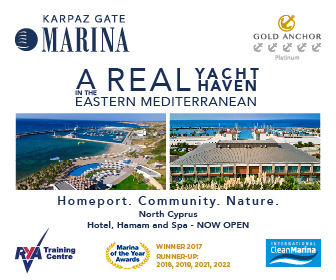UK South Coast: No Anchor Zones in Studland Bay
Published 14 years ago, updated 6 years ago
As reported by Sail-World.com
The RYA is urging boaters to observe the Voluntary No Anchor Zone (VNAZ) that has been set up in Studland Bay, Dorset by The Crown Estate and Natural England as part of the “Studland Bay Seagrass Project”.
Studland Bay is shallow, a sandy embayment on the south coast of England and is an important site for seagrass and seahorses, both of which are protected by law due to their relative scarcity around the UK.
The recent addition of seahorses to the list of protected species under the Wildlife and Countryside Act has led to concerns over the possible impacts of recreational boat anchoring and mooring on seagrass meadows in Studland Bay. The sheltered nature of the Bay makes it a popular anchorage with recreational boaters and the protection offered from prevailing south westerlies makes it an important safe haven during inclement weather.
“It has been suggested that seagrass is unable to regenerate as a result of damage caused by anchoring and mooring and that these activities, therefore, have a detrimental effect on the seahorses which make their home in the seagrass found in the Bay. However to date, this link has not been proven”, commented Caroline Price, RYA Planning and Environmental Advisor.
“The Studland Bay Seagrass Project seeks to improve understanding on this issue and establishing a Voluntary No Anchor Zone (VNAZ) within the bay is a vital part of the study, which we hope will demonstrate that recreational boating activity does not have a detrimental impact on the seahorses in the area.”
Since its installation in November 2009 there has been a range of issues with the VNAZ and as the summer sailing season has got underway it appears an increasing number of boats are anchoring within the VNAZ.
“If the VNAZ is not successful the Studland Bay Seagrass Project will be of limited value and the argument for allowing recreation and nature conservation to co-exist will be weakened” continued Caroline.
“As the UK Government moves towards identifying and designating new Marine Conservation Zones (MCZ) it is vital that voluntary management regimes can be shown to work and that legislation is not necessary to control the activities of recreational boaters.”
“The recreational boating sector has long been recognised as being able to self-regulate thereby reducing the need for additional layers of legislation. If the Studland Bay VNAZ cannot be demonstrated to work then it is possible that a mandatory no anchoring zone may be introduced as part of the MCZ process making it a criminal offence to anchor within it. The success or otherwise of the Studland Bay VNAZ, therefore, has implications far beyond the south coast of England.”
“It is imperative that awareness of the Studland Bay VNAZ is raised throughout the boating community and we are urging everyone to spread the word and to respect the VNAZ”, concluded Caroline.
The VNAZ is a small area (100m X 100m) located off South Beach, Studland and is marked by four yellow buoys (one on each corner) as well as two in the centre of the zone. The VNAZ has been advertised through Notices to Mariners and the boundary coordinates are as follows:
Lat Long
SW50° 38.609828’N1° 56.343396’W
SE50° 38.609782’N1° 56.258541’W
NE50° 38.663738’N1° 56.258468’W
NW50° 38.663784’N1° 56.343325’W
The RYA has been involved in the Studland Bay Seagrass Project from the beginning and is a member of the Studland Seagrass and Seahorse Study Group which is an informal, non-statutory focus and discussion group formed of residents, local yacht clubs, environmental groups and other interested parties.
Related to following destinations: United Kingdom
Related to the following Cruising Resources: Environment







